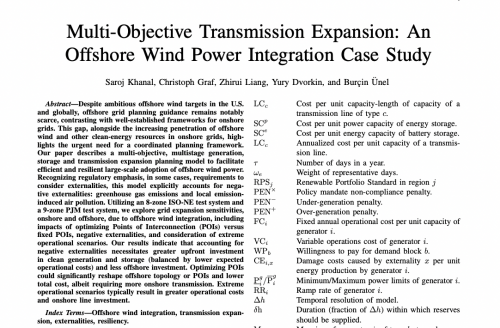Despite ambitious offshore wind targets in the U.S. and globally, offshore grid planning guidance remains notably scarce, contrasting with well-established frameworks for onshore grids. This gap, alongside the increasing penetration of offshore wind and other clean-energy resources in onshore grids, highlights the urgent need for a coordinated planning framework. Our paper describes a multi-objective, multistage generation, storage and transmission expansion planning model to facilitate efficient and resilient large-scale adoption of offshore wind power. Recognizing regulatory emphasis and, in some cases, requirements to consider externalities, this model explicitly accounts for negative externalities: greenhouse gas emissions and local emission-induced air pollution. Utilizing an 8-zone ISO-NE test system and a 9-zone PJM test system, we explore grid expansion sensitivities such as impacts of optimizing Points of Interconnection (POIs) versus fixed POIs, negative externalities, and consideration of extreme operational scenarios resulting from offshore wind integration. Our results indicate that accounting for negative externalities necessitates greater upfront investment in clean generation and storage (balanced by lower expected operational costs). Optimizing POIs could significantly reshape offshore topology or POIs, and lower total cost. Finally, accounting for extreme operational scenarios typically results in greater operational costs and sometimes may alter onshore line investment.

